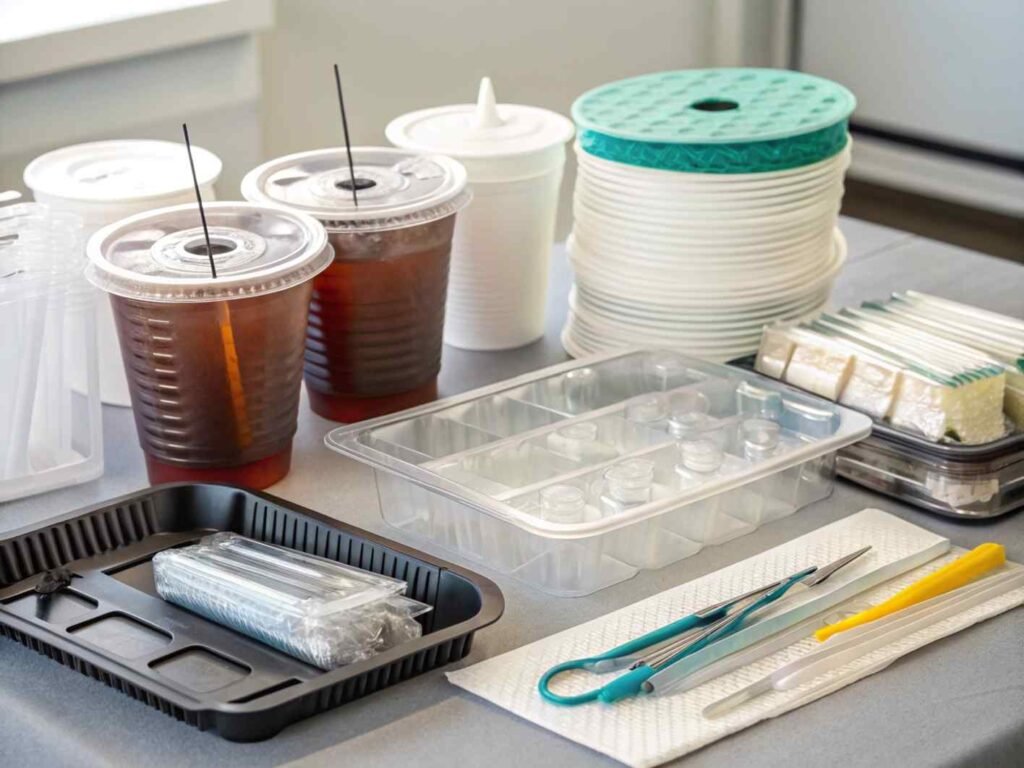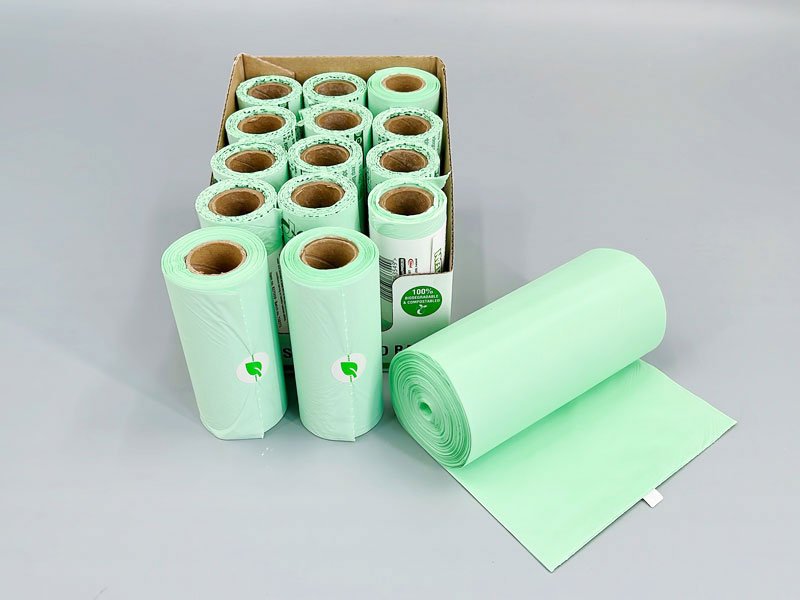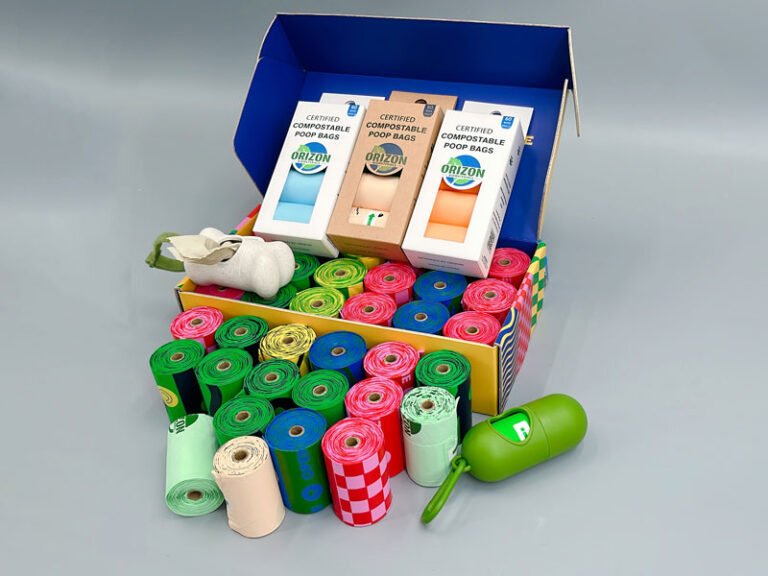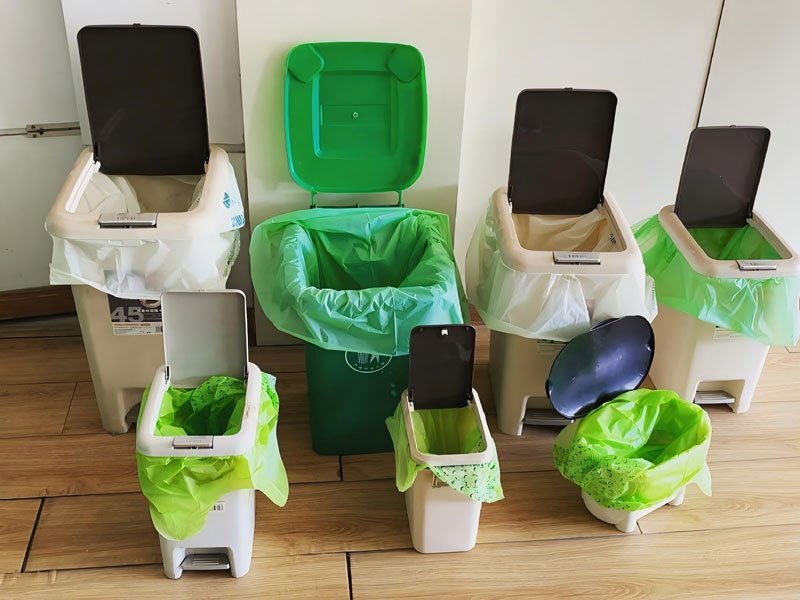The strengthening of environmental awareness and environmentally friendly plastic alternatives make us think of PBAT and PLA. Both materials are biodegradable plastics and are widely used in various products, such as compostable bags, food packaging, etc. What is the difference between PBAT vs PLA? Which one is better for the environment? In this article, we will introduce the Difference between PBAT and PLA in detail.

What is PLA (Polylactic Acid)?
PLA stands for Polylactic Acid. A bioplastic made from natural materials such as corn starch or sugar cane. It is mainly derived from plants and is widely considered renewable. PLA is one of the most commonly used biodegradable plastics.
Main features of PLA:
Derived from renewable resources
Degradable in industrial composting conditions
Used in food containers, disposable cups and 3D printing
Smooth and transparent surface
Less flexible; more brittle than other plastic

What is PBAT (polybutylene adipate terephthalate)?
PBAT is also known as compostable polyester or fossil-based biodegradable plastic. , PBAT is a different type of biodegradable plastic. Unlike PLA, PBAT is made from fossil fuels like regular plastics. PBAT is designed to break down faster under the right conditions. Often used to make flexible items.
PBAT Features:
- Made from fossil resources
- Biodegradable in industrial and home composting
- Very flexible and stretchable
- Used for compostable trash bags, plastic films, and shopping bags
PBAT vs PLA: What Are the Differences?
| eature | PLA | PBAT |
|---|---|---|
| Source | Renewable (corn, sugarcane) | Fossil-based |
| Compostability | Industrial compost only | Industrial and sometimes home |
| Flexibility | Rigid or brittle | Very flexible |
| Common Uses | Cups, trays, 3D printing | Trash bags, films, packaging |
| Transparency | Clear | Not clear |
| Cost | Often lower | Often higher |
Both PLA and PBAT can be blended together to combine the strengths of both materials. These blends are popular in compostable bags and flexible packaging.
Biodegradability and Compostability
Biodegradability means the material can break down with the help of natural elements like bacteria, heat, and moisture. Compostability means it breaks down into harmless substances like water, carbon dioxide, and compost.
- PLA is compostable, but usually only in industrial composting centers with high heat.
- PBAT is compostable, and some types can break down in home composting.
Always look for certifications such as:
- BPI Compostable (USA)
- EN13432 (Europe)
- OK Compost HOME (TÜV Austria)
These show that the material meets international composting standards.

PLA Applications:
- Cold drink cups
- Food trays
- Transparent packaging
- 3D printer filament
- Medical tools (like sutures)
It is better for products that don’t need to bend or stretch.

PBAT Application Areas:
- Compostable garbage bags
- Dog poop bags
- Agricultural mulch films
- Food wrapping film
- Flexible mailers
Because it stretches well, it is better for soft and flexible products.
PLA and PBAT Blends
In many cases, manufacturers mix PLA and PBAT. This creates a material that is both strong and compostable. PLA gives structure, while PBAT adds flexibility.
This blend is often used to make:
Compostable shopping bags
Biodegradable mailing bags
Fruit and vegetable bag
Bioplastics Environmental Comparison: PLA vs. PBAT
Both materials are better than regular plastic because they break down. But they have different environmental pros and cons.
| Material | Pros | Cons |
| PLA | - Comes from plants - Uses less fossil fuel - Lower carbon footprint | - Needs special composting conditions - Not compostable at home |
| PBAT | - Biodegradable in more conditions - Adds flexibility to blends | - Made from fossil fuels - More expensive |
If used correctly, both materials can help reduce plastic pollution.
FAQ
Is PBAT better than PLA?
It depends on the product. PBAT is better for flexible products, while PLA is better for hard ones.
Can PBAT and PLA be mixed?
Yes. Many products are made from PBAT + PLA blends.
Which one breaks down faster?
PBAT usually breaks down faster, especially in home composting.
Are both materials safe for composting?
Yes, if they are certified by groups like BPI or TÜV Austria.
Are they truly biodegradable?
Yes, but they need the right conditions. They will not break down well in landfills.
Conclusion
Both PBAT and PLA are helpful in reducing plastic waste. PLA comes from plants and is good for rigid products. PBAT is fossil-based but flexible and breaks down quickly. Blending both gives the best of both worlds.







